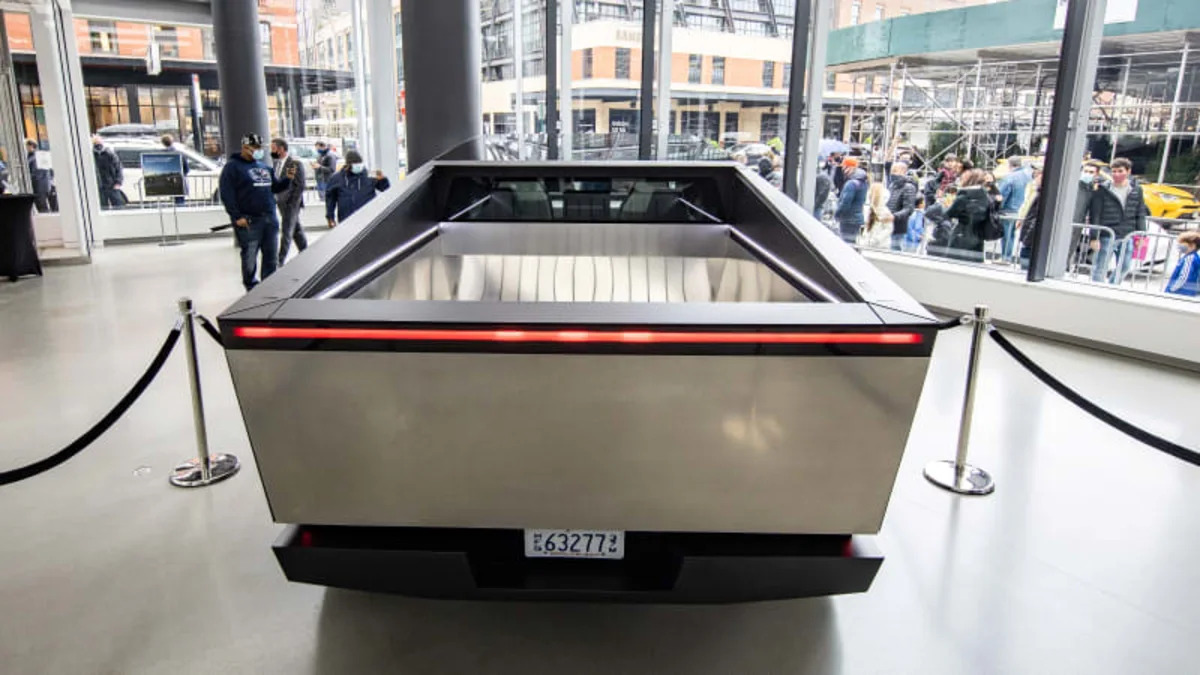Tesla Inc. is sourcing some stainless steel panels for the exterior of its new Cybertruck from Finnish supplier Outokumpu Oyj, which has worked to accommodate the electric vehicle’s unconventional design, according to people familiar with the matter.
The materials will be shipped to Tesla’s assembly factory in Austin, marking a major product shift for Outokumpu, the people said, asking not to be identified because the contract is private. The Helsinki-based company is Europe’s largest producer of stainless steel, and is well known for working with automakers when making exhaust systems.
Tesla could be sourcing the materials from Outokumpu’s plant in Calvert, Alabama, and may be using more than one supplier, the people said. Outokumpu declined to comment. Tesla didn’t respond to requests for comment.
Depositary receipts of Outokumpu rose as much as 49% to $3 a share in New York after Bloomberg News reported it’s supplying the metal. Trading volumes of the receipts are low.
The Cybertruck, which isn’t yet in full production but which Chief Executive Officer Elon Musk has promised for later this year, has drawn attention and scrutiny for its use of stainless steel panels. The material, typically a combination of steel and nickel, can be two or three times as expensive as regular steel and is more difficult to shape into body panels.
Musk, who has claimed the stainless steel exterior is “bulletproof,” is expected to update investors on the production of Tesla’s first pickup on an Oct. 18 conference call after the company reports its latest earnings.
No other trucks from major automakers use the finish. Most are sheathed in commodity grades of high-strength steel. Ford Motor Co.’s F-150 pickup uses body panels made of aluminum, but those are affixed on a steel frame.
Musk has championed the use of the material, which helps gives the Cybertruck its Blade Runner-esque look and eliminates the need for paint.
However, the company’s novel approach to building the Cybertruck has left it at least two years behind schedule. Musk has said in social media posts it “was a tough product to design & even tougher to build,” and warned the company is in “uncharted territory, because it is not like anything else.”
Stainless steel was last used on a mass market vehicle in the 1980s when the gull-winged DMC DeLorean debuted and was later immortalized in the "Back to the Future" film series. That vehicle was doomed by production problems and quality control issues.
Tesla may be using a more modern, higher-tech stainless steel. It filed for a patent for an “ultra-hard cold-worked steel alloy.” The material was designed for “improved hardness and corrosion resistance for high-performance applications including automobile parts.”
Early prototypes of the mass market-geared Cybertruck have been spotted in Austin and the San Francisco Bay Area, and Tesla has signaled it will have some kind of handover event to paying customers before the end of 2023.
The electric-vehicle maker told investors during a July earnings call that it “remains on track for initial deliveries this year.” When released, it will join a number of other electric trucks, including Ford’s F-150 Lightning and Rivian Automotive Inc.’s R1T. Deliveries of those two rival vehicles have been underwhelming.
While the decision to use stainless steel panels is groundbreaking for the automotive sector in recent decades, it’s not likely to move the needle as much for the steel industry. However, car manufacturers have long been one of the most important consumers for steelmakers in terms of raw volume.
A typical North American vehicle has about a ton of steel per car produced. Tesla still hasn’t given a forecast for how many Cybertrucks it expects to sell, and even at a ton of stainless steel per truck, it would likely only represent a sliver of the 2 million tons produced in the US each year.
Outokumpu typically supplies stainless steel for bridges and railways. Its products are also used in washing machines and refrigerators.


Sign in to post
Please sign in to leave a comment.
Continue